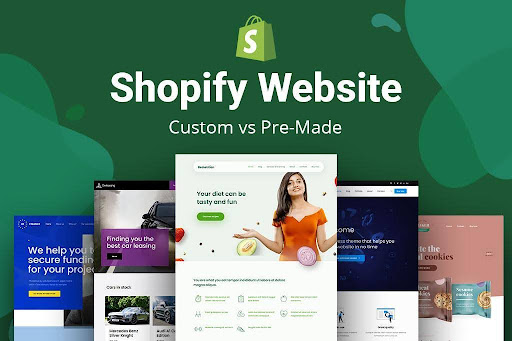5 Mistakes People Keep Making When Building an Online Store
Building an online store sounds simple, right? Pick a platform, upload some products, add a logo, and boom, you’re in business. That’s the theory. In practice, most people find out pretty quickly that creating a store that actually sells is another story. I’ve seen it happen again and again, everything looks great on paper, but real customers just don’t click “Buy”.
If that sounds familiar, don’t worry. It’s not about talent or luck. Usually, it comes down to a few avoidable mistakes. And if you’d rather not go through that learning curve yourself, there are experts who can set things up properly from the start. Shopify store setup services help build a store that feels professional, works smoothly and converts visitors into customers.
Let’s talk through the five mistakes I see most often, and how you can easily dodge them.
1. Building for yourself, not for your customers
You know your products inside out. You’ve lived with them, improved them, probably obsessed over them. The problem? Your customers haven’t. They land on your website, see a bunch of images and menus, and often have no idea where to go next.
That’s where many new store owners slip up, they design what they like instead of what customers need.
What usually goes wrong
- The homepage is too busy, lots of visuals, little clarity.
- Category names make sense only to insiders.
- There’s too much choice, too many paths, too little direction.
A better way
- Ask yourself: if a stranger lands here, do they know what you sell in five seconds? If not, rewrite that first line.
- Show fewer, clearer options. People prefer simplicity.
- Use real customer words in your navigation, not industry jargon.
Try watching a friend explore your store. Don’t guide them, just observe. You’ll see right away where they get stuck. It’s a humbling but valuable exercise.
2. Forgetting that mobile is the main stage
We still say “mobile-friendly” as if it’s an extra. It’s not. Mobile is ecommerce now. Most visitors will see your store on a phone, often while multitasking, with low patience and slower internet.
Still, a lot of stores are designed for desktop first and only later forced to fit on a phone screen. It’s a bit like creating a full-sized poster and then trying to cram it onto a sticky note, the message just doesn’t come through the same way.
Common mobile issues
- Buttons are tiny, hard to tap.
- Text and images load too slowly.
- Checkout forms ask for too much typing.
- Menus rely on hover effects that don’t work on touchscreens.
Simple fixes
- Design for mobile first, seriously, start there.
- Keep buttons large and easy to reach with a thumb.
- Cut form fields in half; use autofill wherever possible.
- Test on real devices, not just simulators. Try to buy something from your own store using your phone on mobile data. If it’s frustrating, imagine what a new customer feels.
3. Making checkout a marathon
You’ve done the hard part: someone liked a product enough to add it to the cart. And then… they leave. Cart abandonment is brutal, and it often happens because checkout feels like a chore.
Surprise fees, mandatory account creation, confusing steps, they all add friction. Customers want reassurance and speed, not more forms.
What’s usually wrong
- Shipping costs appear too late.
- Forced registration.
- Limited payment options.
- Unclear return policy.
How to make it smoother
- Be upfront about shipping and taxes before checkout.
- Offer guest checkout, no one wants another password.
- Add several payment methods, including one-click wallets.
- Write your return policy like a human, not a lawyer. Short, simple, friendly.
A good checkout feels almost invisible. People glide through it and barely notice the process. That’s your goal.
4. Skipping SEO and content basics
You can’t count on paid ads to carry your business forever. They’re great for a quick start, sure, but they burn through budget fast. Organic traffic, on the other hand, takes time to grow, yet once it does, it becomes your most dependable source of visitors. The problem is, too many store owners only think about SEO when everything’s already built, and by then, it’s usually too late to fix easily.They copy product descriptions, skip headings, ignore meta tags, and hope Google will just “figure it out”.
Why that fails
- Google sees your pages as duplicates of hundreds of others.
- You miss out on long-tail searches like “best gift ideas under $30” or “eco-friendly phone case”.
- Meta titles read like robot text, keyword-heavy, zero personality.
What actually works
- Write product descriptions in your own words. Talk benefits, not just specs.
- Add short blog posts or guides around buying decisions.
- Optimize category pages, they often rank better than single products.
- Use clean URLs and descriptive image names (no more “IMG_0023”).
SEO isn’t about tricking algorithms anymore. It’s about making your content clear and helpful. The same things that help search engines understand your site also help people trust it.
5. Launching without analytics or testing
So your store is live, congratulations! But do you actually know what’s happening on it? Many business owners just look at total sales and stop there. That’s like driving with your eyes half closed.
Without proper analytics, you’re basically guessing. You won’t know where customers lose interest, which pages actually drive sales, or which ads are just eating your budget for nothing.
The hidden mistakes
- No tracking on key actions like “add to cart” or “begin checkout”.
- No data from marketing campaigns because URLs aren’t tagged.
- No A/B testing, decisions made purely on gut feeling.
How to start smart
- Set up Google Analytics or another tracking tool properly.
- Track every step of the customer journey, not just final purchases.
- Run one small test at a time. Change headlines, images, buttons, but keep it measurable.
- Check recordings or heatmaps. See where people hesitate.
Data doesn’t make creativity obsolete, it makes it smarter. You can spot small leaks that cost you real money every week.
Wrapping it up
Creating an online store is like building a living thing. It grows, changes, needs care. It’s not about getting everything perfect on day one, it’s about avoiding the traps that slow you down.
To recap quickly:
- Design for your customers, not for yourself.
- Treat mobile as the main experience, not the backup.
- Keep checkout short and honest.
- Write your own product content and make it useful.
- Measure what happens after launch.
That’s it. Five simple principles that sound obvious, until you see how many stores ignore them.
If you don’t feel like wrestling with all the setup headaches yourself, just hand it over to someone who does this every day. A team that knows Shopify inside out can sort out the tech stuff, while you put your energy into what actually matters, shaping your brand and talking to your customers.
Because, honestly, the goal isn’t just to launch an online store. The goal is to build one that people love coming back to.









